Positionings
The notion of a "positioning" is as complex as it is powerful.
Al Scheflen (1973) first proposed that, in any interaction, participants assume a limited number of "positions." For example, at the beginning of the psychotherapy session Scheflen analyzed:
[each participant] sat down in a particular posture and oriented himself to the others. while holding this posture and orientation he performed a sequence of activities. When these were completed or interrupted, he shifted his posture and orientation to another configuration and began another activity. then he went back to his original positiona and repeated the sequence. (p. 19).
Schefflen points out that, in the session he observed there were only nine of these positions and that some of them are found in other settings.
This idea was used by McDermott as the basis for the presentation of his analysis of significant moments in a reading lesson. He introduces the term as follows:
People usually take on postures which are indicative of the task before them, and they usually do this together... Each positioning represents a struggle during which members negotiate their relations with each other. Every person involved carefully monitors everyone else for an interpretation of what it is that is going on. Thus, people use their positioning of each other to guide their responses to each other, just they use their own formulations of thwa they are are doing to guide their concerted behavior. (1978)
The major shift from Scheflen may be the emphasis on the work, indeed the struggle that people may be said to engage in as they hold each other accountable to maintaining the position. He has pushed this analysis in many publications for various theoretical purposes. I have used it routinely for several of the analysis in Successful Failure. I have argued elsewhere that the appearance of stability that is noticeable a posteriori by observers is the product of the participants as they give each other what might be termed 'stage directions' to stay in a particular position. This may allow us not to speak about "negotiations" that are mostly not visible in the kind of settings where positional analysis is most helpfult (e.g. classroom, medical procedures and other complex face to face interactions).
For methodological purposes, note the contrast between the representation of the positioning and the still from the video record that corresponds to one of the many moments when the children and teacher in the reading group find themselves in one or another of the positionings.
The drawing of the positioning abstracts most of the characteristics of the original scene to focus solely on, essentially, to position of the shoulders and heads of the participants in relation to each other. McDermott argues that the contrast between these positions is significant and marks the three main contexts of relevance. The difference between the positions "makes a difference" at the level of analysis chosen by McDermott.
Contrast this representation of a particular analysis from the representation of another analysis designed to emphasize the variety of activities possible within one positioning.
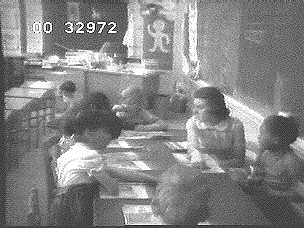 |
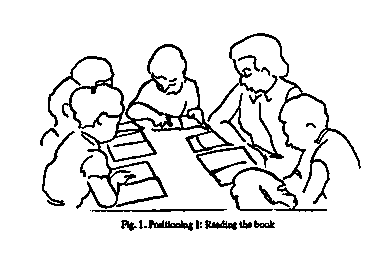 |
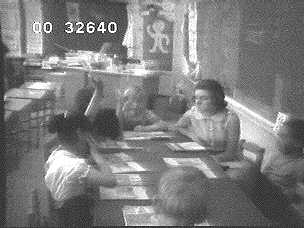 |
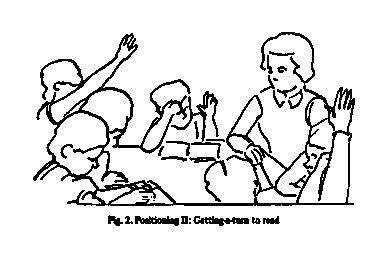 |
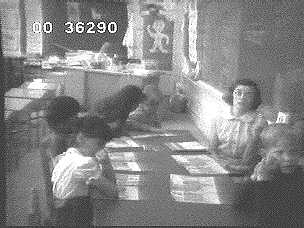 |
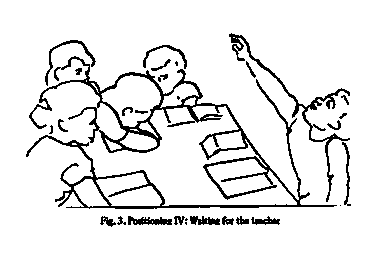 |
Compare this with the transcript highlighting positioning shifts and another transcript of the co-occurent verbal stream.